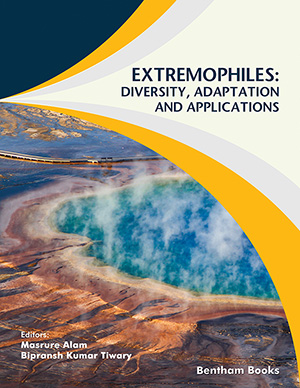Abstract
SHS investigation development is considered from the geographical and historical viewpoint. 3 stages are described. Within Stage 1 the work was carried out in the Department of the Institute of Chemical Physics in Chernogolovka where the scientific discovery had been made. At Stage 2 the interest to SHS arose in different cities and towns of the former USSR. Within Stage 3 SHS entered the international scene. Now SHS processes and products are being studied in more than 50 countries.
Abstract
Extremophiles are microbes capable of adaptation, survival and growth in
extreme habitats that are supposed as adverse or lethal for other life forms. Like various
other extreme environments, bacteria are also reported to grow in a minimum medium
without additional carbon and energy sources. The microorganisms that can grow in
low nutrient concentrations, or in the apparent absence of nutrients, are known as
oligotrophs. In contrast, copiotroph bacteria grow fast where the resource or nutrient is
abundant. Many of these oligotrophs alter their morphology (surface to volume ratio)
with changing nutrient concentrations. The diverse oligotrophs have been isolated from
the different low-nutrient habitats, such as marine, soil, desert soil, ultra-pure water,
etc. The molecular and physiological properties of diverse oligotrophs and their
applications in bioremediation are also studied. Oligotrophs would also be suitable for
in situ bioremediation, because such microorganisms can grow on the contaminated
site without additional nutrients. Remarkably, the adaptive capabilities of oligotrophs
convert them into an attractive source for industrial purposes. Thus, oligotrophs have a
biotechnological potential, orienting researchers to attempt their isolation and studies
from various low-nutrient habitats. The objective of this chapter is to discuss the
characteristics, adaptations and applications of oligotrophs.
Keywords:
Copiotrophs, Extremophiles, Extremozymes, High-throughput culturing (HTC), Low-nutrient conditions, Oligotrophs.
We recommend

Authors:Bentham Science Books






